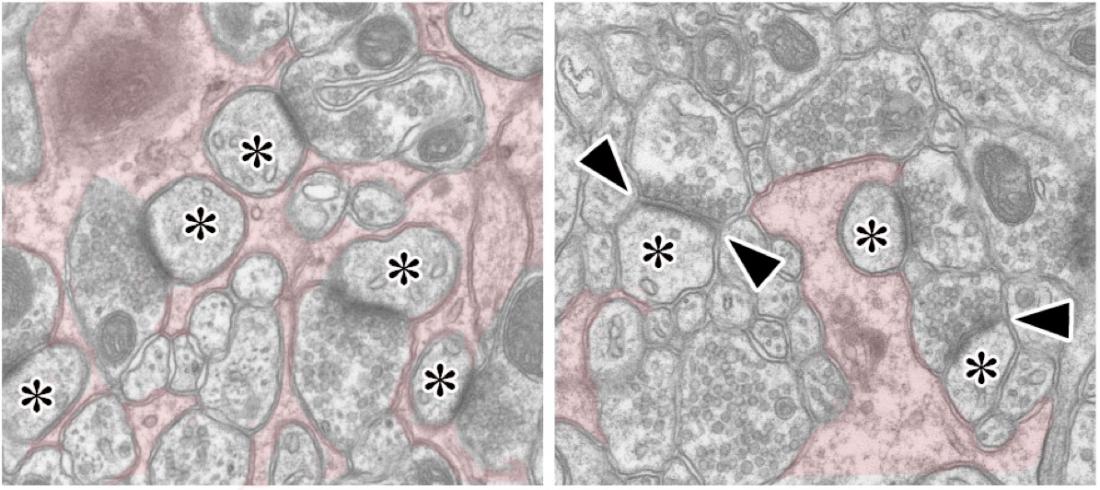Researchers at Hokkaido University have found that the molecule “L-gutamate/L-aspartate transporter” (GLAST) plays an essential role in establishing and maintaining proper neural wiring of Purkinje cells in the cerebellum.
Purkinje cells are among the largest nerve cells in the brain. They are present in the cerebellum, a small structure in the back of the brain influencing motor coordination. They are mainly hooked up to the nervous system by means of two distinct types of nerve fibers, “parallel fibers” and “climbing fibers.” Those fibers connect to different part of Purkinje cell dendrites, or the branches projecting from the cell body, segregating their territories.
GLAST is a molecule produced by specialized insulating cells, called Bergmann glia, that wrap around Purkinje cell synapses (a synapse is the structure connecting one nerve cell to another). GLAST’s role is to remove excess glutamate, a neurotransmitter used by parallel and climbing fibers to send signals to Purkinje cells. This facilitates a “high-fidelity” signal, by allowing the right amount of glutamate to reach the targeted nerve cell without spilling over onto its neighbors. However, little is known about GLAST’s role in the development of neural circuits.
Professor Masahiko Watanabe of Hokkaido University and his colleagues in Japan compared the wiring of Purkinje cells in normal mice and mutant mice lacking GLAST. The wiring of Purkinje cells in the mutant mice was laden with abnormalities.
Each Purkinje cell is normally innervated by a single climbing fiber as a result of competition between the fibers during development. However, in the mutant mice, Purkinje cells were innervated by multiple climbing fibers, which apparently caused the Purkinje cells to be atypically excited.
Parallel fibers were also affected. They robustly increased the number of connections with Purkinje cells, impairing the territorial segregation between climbing fibers and parallel fibers. Furthermore, in the knockout mice, Bergmann glial cells were improperly wrapped around the Purkinje cells, exposing them to the external environment.
In a different experiment, they also found that functional blockade of GLAST in normal adult mice results in similar abnormalities as seen in the knockout mice.
“We have shown that the glutamate transporter, GLAST, plays important roles in establishing and maintaining proper nerve wiring and insulation in the cerebellum. Further investigation should reveal how GLAST’s function is related to the plasticity of the neural network,” says Masahiko Watanabe.
Contacts:
Professor Masahiko Watanabe
Faculty of Medicine
Hokkaido University
Email: watamasa[at]med.hokudai.ac.jp
Naoki Namba (Media Officer)
Global Relations Office
Institute for International Collaboration
Hokkaido University
Tel: +81-11-706-2185
Email: pr[at]oia.hokudai.ac.jp



